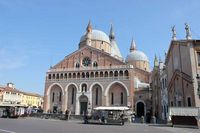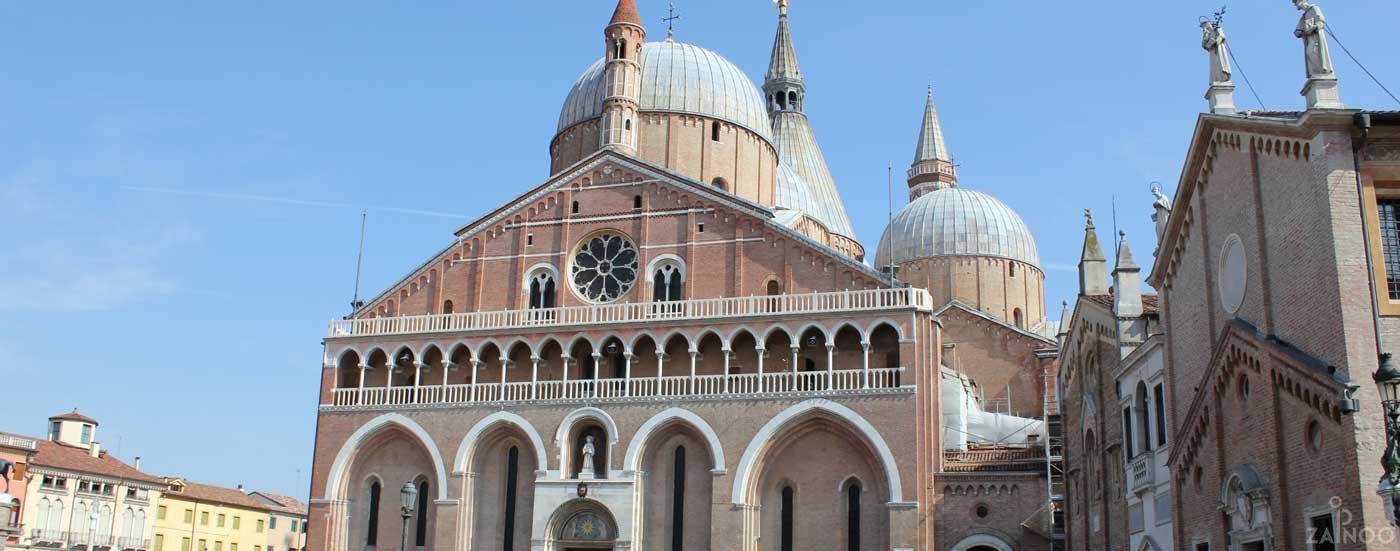Basilica di Sant'Antonio
Church
Basilica di Sant’Antonio
Pilgrimage site and tomb of St. Anthony
The Basilica di Sant'Antonio is one of the main attractions in Padua. It reflects a strong Byzantine influence and is dedicated to St. Anthony, whose tomb is located in the church. Anthony was a Franciscan monk who moved through southern France and northern Italy and inspired the people with his eloquent speeches. In 1231 he died in Padua and was canonised a year later. By keeping its relics in the basilica, the church fast became a destination for pilgrims from all over Europe, and even today tens of thousands of pilgrims come every year to Padua to the Basilica di Sant'Antonio to pray and pay homage to the saint.
History of the Basilica di Sant’Antonio
The small chapel of Maria Mater Domini originally stood on the site of the Basilica di Sant'Antonio. It is still incorporated into the Basilica, and includes the grave of St. Anthony. A monastery was built beside the chapel in 1229 – probably by Antony himself. In accordance with his wishes, Anthony was buried in the chapel after his death and shortly after his canonisation the order began with the construction of the great basilica. The first Franciscan church was soon extended by the two aisles and the numerous domes, towers and chapels.
Inside the Basilica di Sant’Antonio
If you enter the Basilica di Sant'Antonio, you will find in the left aisle the former chapel of Maria Mater Domini, via which you can reach the Capella di Sant'Antonio. In a large sarcophagus lies St. Anthony, who is still asked for help by believers today. The back wall of the chapel contains beautiful marble reliefs from the life of the saint. The beautifully decorated and frescoed neighbouring chapels contain bronze statues by Donatello. In the right aisle in the Chapel of St. James, a fresco cycle by Altichiero deserves special attention. With his natural depiction of the actors, Altichiero is considered a precursor of the Renaissance and his frescoes are among the major works of the 14th century in Italy. The Chapel of the Holy Sacrament on the right-hand side contains, among other things, the tomb of the Venetian general Gattamelata, whose equestrian statue is located in front of the church.
The Chapel of the Relics
The culmination of any pilgrimage and visit to the Basilica di Sant'Antonio is the Chapel of the Relics at the end of the basilica. In the small room you can reverently admire the gold-framed relics, which contain the undecayed tongue of St. Anthony, his lower jaw with five teeth and some other mortal remains of the saint. Other features include an original half-rotted coffin and one of his garments. A very special experience, no doubt.
Franciscan convent and cloisters
From the Basilica di Sant'Antonio and the piazza you can reach the connected Franciscan convent with its four medieval cloisters – 3 of them are accessible for a visit. The large central cloister, Chiostro della Magnolia, owes its name to a large magnolia tree in the centre. Via the Chiostro delle mostre you can reach the Museo Civico al Santo, which houses an exhibition of pilgrims’ gifts that were brought to St. Anthony over the ages. Crossing the Chiostro del Beato Luca, you can visit the Museo Antoniano, which contains numerous church treasures and vestments from the 16th to the 18th century, as well as some paintings and preserved frescoes.
Around the Basilica di Sant’Antonio
Against all this glory, the famous equestrian statue of Gattamelata, a Venetian general of the 15th century in front of the basilica, goes almost unrecognised. It was built by Donatello and is considered to be one of the greatest works of the early Renaissance. On the piazza right next to the basilica is also the grave chapel of the Marchese di Soragna, also called the Oratorio di San Giorgio. Like the Cappella di San Jacubus, the grave chapel is completely decorated with frescoes by Altichiero, depicting scenes from the life of Jesus and the life stories of the saints George, Catherine and Lucy.
Entrance
Admission to the Oratorio di San Giorgio and the Museo Civico al Santo: € 2,50 each















Tweet